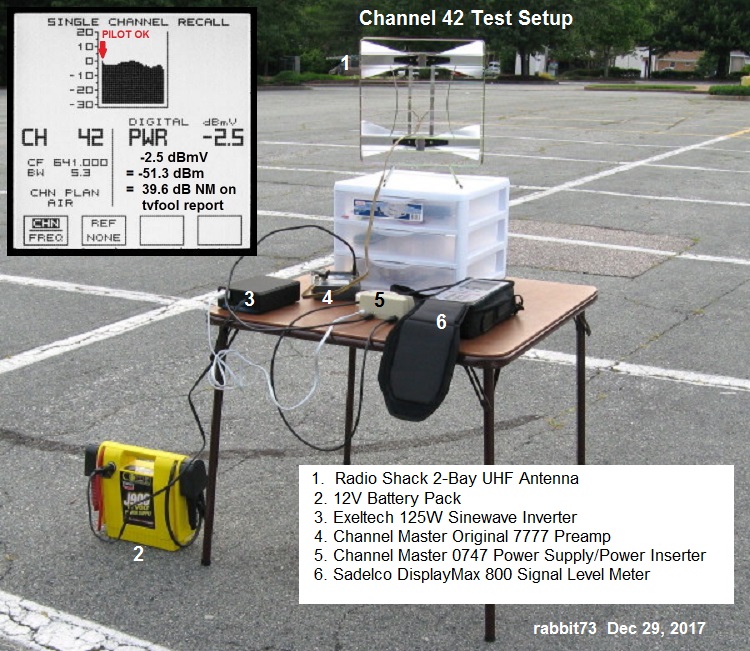Quote:
Originally Posted by tripelo

That would be good if was practical. For accuracy, the two antennas would need to be located at the same physical place. In many cases at UHF, a separation of a foot or so, and the two antenna combos can receive different signals.
|
That is true because the wavefront is non-uniform. I have seen a difference in the scan of a channel when moving the antenna a foot horizontally.

But then, how is it possible for you to make a valid comparison of the performance of the two systems? Have the two antennas on a sliding carriage that moves each antenna into the same location, or what? Otherwise, how can you possibly get a comparison like you would on a lab grade antenna range? On a range, you would use a constant strength test signal and place each antenna, in turn, in the same location.
The closest I got to the ideal was to switch the two antenna locations, but I really wanted to be able to slide them sideways.

The white wall was just a background for the photo. The actual comparison was done at a location with OTA signals that were as constant as I could find. I used an A/B switch for a rapid comparison.
